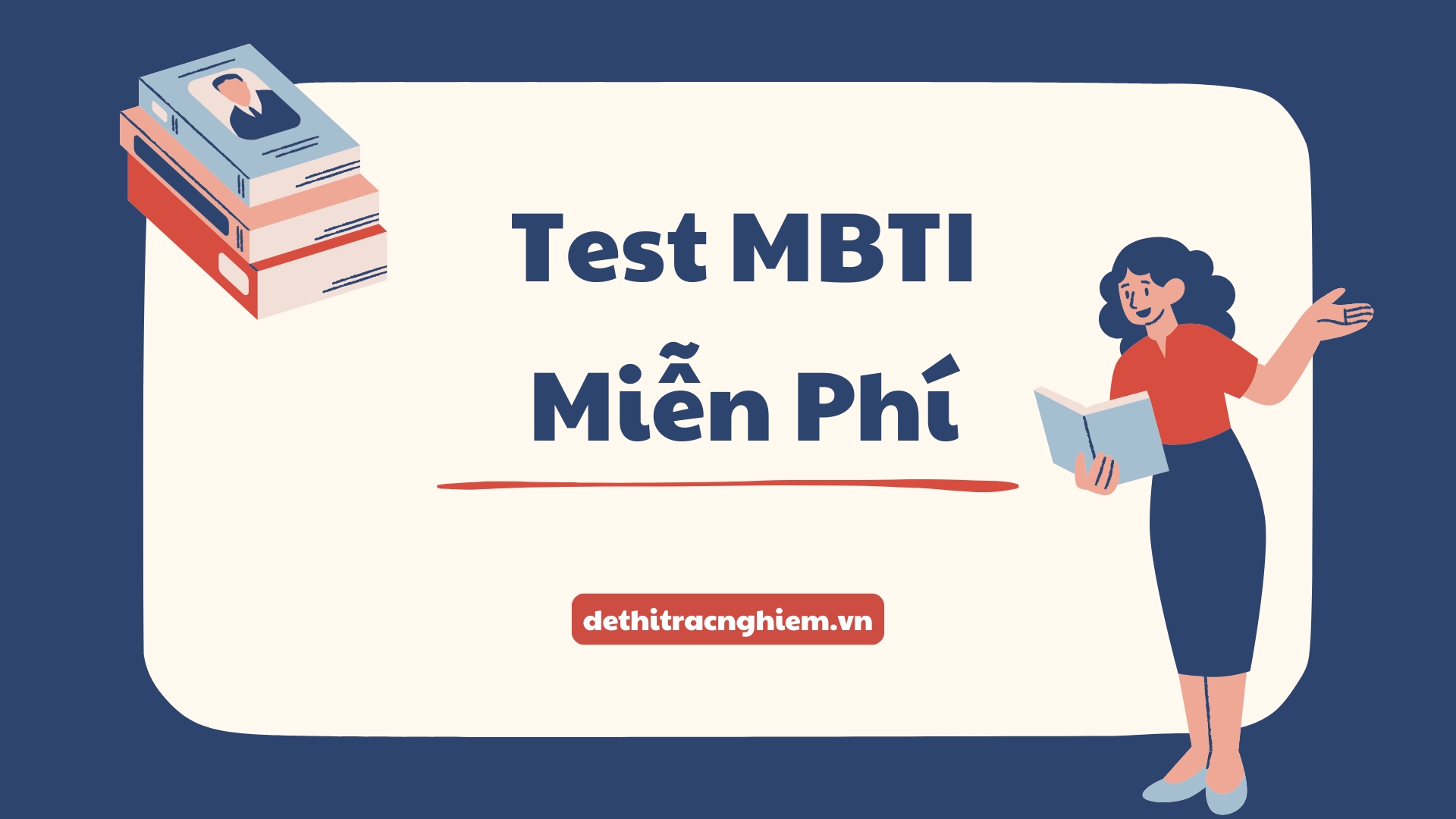Trắc nghiệm Tiếng Anh 10: Unit 7 Writing là một trong những đề thi thuộc Unit 7 – Viet Nam and International Organisations trong chương trình Tiếng Anh lớp 10. Phần viết trong unit này giúp học sinh rèn luyện khả năng trình bày ý tưởng một cách rõ ràng, logic và chính xác ngữ pháp khi nói về vai trò của Việt Nam trong các tổ chức quốc tế – một chủ đề mang tính toàn cầu và gắn liền với thực tiễn cuộc sống.
Trong bài Trắc nghiệm Tiếng Anh 10 Unit 7 Writing, học sinh có thể được yêu cầu viết đoạn văn miêu tả, bài luận trình bày quan điểm, hoặc viết về vai trò và đóng góp của Việt Nam trong tổ chức như Liên Hợp Quốc, WHO, ASEAN…. Các cấu trúc quan trọng cần nắm bao gồm: câu bị động, mệnh đề quan hệ, các liên từ logic (however, therefore, in addition…), cùng với kỹ năng xây dựng đoạn văn theo bố cục mở bài – thân bài – kết luận.
Hãy cùng Dethitracnghiem.vn cùng tìm hiểu về đề thi này và tham gia làm kiểm tra ngay lập tức!
Trắc nghiệm Tiếng Anh 10 Unit 7 Writing
Câu 1: Mark the letter A, B, C, or D to indicate the sentence that is closest in meaning to each of the first sentence: People from diverse cultures can make American companies more productive and profitable.
A. American companies can make themselves more productive and profitable with diverse cultures.
B. American companies can be made more productive and profitable by people from diverse cultures.
C. Diverse cultures can make American companies more productive and profitable with their people.
D. Diverse cultures can make American companies and their people more productive and profitable.
Câu 2: Mark the letter A, B, C, or D to indicate the sentence that is closest in meaning to each of the first sentence: Dying languages and urbanization are threats to cultural diversity.
A. Of the threats to cultural diversity is dying languages and urbanization.
B. Cultural diversity is threatened with dying languages and urbanization.
C. Dying languages and urbanization is making cultural diversity a threat.
D. Culture diversity is threatening to kill some languages and urbanization.
Câu 3: Mark the letter A, B, C, or D to indicate the sentence that is closest in meaning to each of the first sentence: When we interact and try to understand others, we will not judge them.
A. We will not judge others if we interact and try to understand them.
B. Unless we do not interact and try to understand others, we will not judge them.
C. If we do not try to interact and understand others, we will not judge them.
D. We interact and try to understand others; otherwise, we will not judge them.
Câu 4: Mark the letter A, B, C, or D to indicate the sentence that is closest in meaning to each of the first sentence: Cultural diversity in the workplace can sometimes lead to intercultural conflicts.
A. Cultural diversity in the workplace can sometimes result from intercultural conflicts.
B. Intercultural conflicts can sometimes result from cultural diversity in the workplace.
C. In the workplace, cultural diversity can be sometimes the leaders of intercultural conflicts.
D. In the workplace, intercultural conflicts can sometimes be led by cultural diversity.
Câu 5: Mark the letter A, B, C, or D to indicate the sentence that is closest in meaning to each of the first sentence: Learning about cultural differences can actually bring people closer together.
A. To bring people closer together, we have to learn about cultural differences.
B. To learn about cultural differences is to bring people closer together.
C. People can be brought closer together by learning about cultural differences.
D. People can learn about cultural differences to bring themselves closer together.
Câu 6: Mark the letter A, B, C, or D to indicate the sentence that best combines each pair of sentences given: Most of us enjoy one aspect of cultural diversity. This can also be a good way to start learning about new cultures.
A. Enjoying one aspect of cultural diversity can also be a good way to start learning about new cultures.
B. As most of us enjoy one aspect of cultural diversity, it can also be a good way to start learning about new cultures.
C. Most of us enjoy one aspect of cultural diversity, which can also be a good way to start learning about new cultures.
D. A good way for most of us to start learning about new cultures can also be enjoying one aspect of cultural diversity.
Câu 7: Mark the letter A, B, C, or D to indicate the sentence that best combines each pair of sentences given: Cultural diversity can be a source of tension. It can also bolster workplace productivity.
A. Cultural diversity can be a source of tension, but it can also bolster workplace productivity.
B. Cultural diversity can bolster workplace productivity, but it can also be a source of tension.
C. Being a source of tension can also make cultural diversity bolster workplace productivity.
D. When bolstering workplace productivity, cultural diversity can be a source of tension.
Câu 8: Mark the letter A, B, C, or D to indicate the sentence that best combines each pair of sentences given: Diverse companies are more aware of the needs of their community. They tend to give more monetarily and engage in cultural events in their communities.
A. Because diverse companies are more aware of the needs of their community, they tend to give more monetarily and engage in cultural events in their communities.
B. Diverse companies are more aware of the needs of their community, but they tend to give more monetarily and engage in cultural events in their communities.
C. Although diverse companies are more aware of the needs of their community, they tend to give more monetarily and engage in cultural events in their communities.
D. Diverse companies are not only more aware of the needs of their community, but they also tend to give more monetarily and engage in cultural events in their communities.
Câu 9: Mark the letter A, B, C, or D to indicate the sentence that best combines each pair of sentences given: Students’ needs are diverse. There are various types of schools and training programs to choose from.
A. Students’ needs are diverse although there are various types of schools and training programs to choose from.
B. There are various types of schools and training programs for students of diverse needs to choose from.
C. Students’ needs are diverisifying types of schools and training programs for them to choose from.
D. Students’ needs are diverse, so there are various types of schools and training programs to choose from.
Câu 10: Mark the letter A, B, C, or D to indicate the sentence that best combines each pair of sentences given: There is a wide range of classroom activities. These activities can help students recognize the essential humanity and value of different types of people.
A. There is a wide range of classroom activities that can help students recognize the essential humanity and value of different types of people.
B. A wide range of activities can help recognize the essential humanity and value of different types of students in the classroom.
C. In the classroom, there is a wide range of activities which can help students recognize the essential humanity and value of different types.
D. Students can be helped to recognize a wide range of activities of essential humanity and value of different types of people.
Question 11: Mark the letter A, B, C, or D to indicate the sentence that is closest in meaning to each of the first sentence: He didn’t study hard, so he failed the exam.
A. If he studied hard, he would fail the exam.
B. He studied hard, and he failed the exam.
C. If he had studied hard, he wouldn’t have failed the exam.
D. Despite having studied hard, he failed the exam.
Question 12: Mark the letter A, B, C, or D to indicate the sentence that is closest in meaning to each of the first sentence: People should respect the elderly.
A. It is not necessary for people to respect the elderly.
B. People must not respect the elderly.
C. It is important for people to respect the elderly.
D. People are not supposed to respect the elderly.
Question 13: Mark the letter A, B, C, or D to indicate the sentence that is closest in meaning to the first sentence: Although she is beautiful, she is not intelligent.
A. She is beautiful but she is intelligent.
B. Despite her beauty, she is not intelligent.
C. She is beautiful, and therefore she is intelligent.
D. Because she is beautiful, she is also intelligent.
Question 14: Mark the letter A, B, C, or D to indicate the sentence that is closest in meaning to the first sentence: He is too short to become a police officer.
A. He is short enough to become a police officer.
B. He is very tall, so he became a police officer.
C. He is not tall enough to become a police officer.
D. Although he is short, he is still a police officer.
Question 15: Mark the letter A, B, C, or D to indicate the sentence that is closest in meaning to the first sentence: I have never read a more interesting book.
A. This book is as interesting as other books I have read.
B. This book is one of the least interesting books I have ever read.
C. This is the most interesting book I have ever read.
D. This book is not interesting.
Question 16: Mark the letter A, B, C, or D to indicate the sentence that best combines each pair of sentences given: He is very rich. He is still unhappy.
A. He is rich, so he is unhappy.
B. He is rich, and he is also unhappy.
C. Despite being very rich, he is still unhappy.
D. He is rich because he is unhappy.
Question 17: Mark the letter A, B, C, or D to indicate the sentence that best combines each pair of sentences given: You study hard. You will pass the exam.
A. You will pass the exam unless you study hard.
B. You will not pass the exam because you study hard.
C. You study hard, but you will not pass the exam.
D. If you study hard, you will pass the exam.
Question 18: Mark the letter A, B, C, or D to indicate the sentence that best combines each pair of sentences given: She is very kind. She helps a lot of people.
A. She is very kind, so people don’t need her help.
B. People don’t need her help despite she is very kind.
C. Because she is very kind, she helps a lot of people.
D. She is not kind, but people need her help.
Question 19: Mark the letter A, B, C, or D to indicate the sentence that best combines each pair of sentences given: I don’t have enough money. I cannot buy this car.
A. Because I don’t have enough money, I can buy this car.
B. Though I don’t have enough money, I can buy this car.
C. I have enough money to buy this car.
D. Because I don’t have enough money, I cannot buy this car.
Question 20: Mark the letter A, B, C, or D to indicate the sentence that best combines each pair of sentences given: He is intelligent. He cannot solve this problem.
A. He is intelligent so he cannot solve this problem.
B. As he cannot solve this problem, he is not intelligent.
C. Although he is intelligent, he cannot solve this problem.
D. He is intelligent because he cannot solve this problem.




